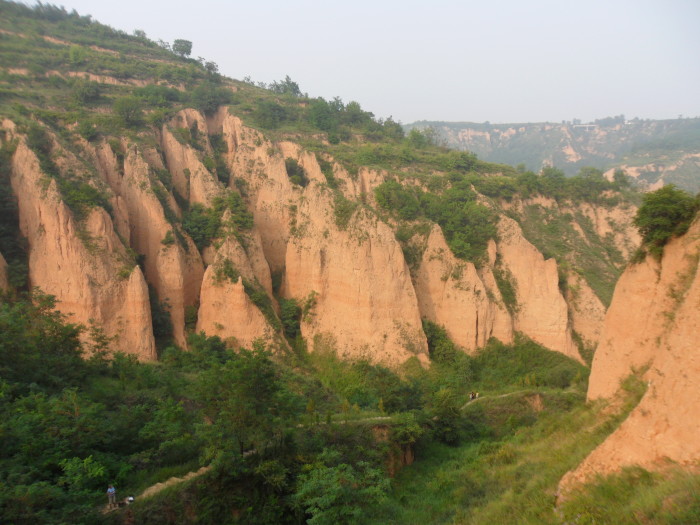Desertification and monsoon climate change linked to shifts in ice volume and sea level

Mountains Dr Thomas Stevens
Huge areas of central China is covered by a plateau consisting of a fine grained soil type called loess – a sediment deposited here by winds during the Ice Age. The soils formed on loess are very fertile and have been one of the key factors driving cultural development and population growth in China for thousands of years. Additionally, the loess plateau also contains a geological archive that can be used to decipher past climate changes.
Through detailed examination of the loess sediments, a group led by researchers at Uppsala University together with colleagues from Denmark has identified how changes in climatological phenomena such as ice volume and sea level also affected the extent of deserts in China, as well as the behavior of the East Asian summer monsoon.
”We have conducted the most detailed dating of the loess to date, which has enabled us to identify changes in the monsoon and desertification processes in more detail and with much greater accuracy than previously possible. We can now compare these changes to other known climate changes such as variation in ice volume, sea level and even the Earth’s orbit during the Ice Age”, says Dr. Thomas Stevens, first author and researcher at Uppsala University.
”We can now show that when ice volume decreased and sea level rose, the summer monsoon rainfalls in East Asia intensified and spread further inland, while sandy deserts in China retreated”, says Dr. Stevens.
With today’s shrinking ice caps and rising sea levels, this has implications for how the Eurasian continent will once again experience changes in the summer monsoon rainfall and desertification.
For more information, please contact Thomas Stevens, Department of Earth Sciences, Uppsala University, tel: + 46 73 645 2007, email: thomas.stevens@geo.uu.se
T. Stevens, J.-P. Buylaert, C. Thiel, G. Újvári, S. Yi, A. S. Murray, M. Frechen & H. Lu (2018) Ice-volume-forced erosion of the Chinese Loess Plateau global Quaternary stratotype site, Nature Communications, DOI: 10.1038/s41467-018-03329-2
Media Contact
More Information:
http://www.vr.seAll latest news from the category: Earth Sciences
Earth Sciences (also referred to as Geosciences), which deals with basic issues surrounding our planet, plays a vital role in the area of energy and raw materials supply.
Earth Sciences comprises subjects such as geology, geography, geological informatics, paleontology, mineralogy, petrography, crystallography, geophysics, geodesy, glaciology, cartography, photogrammetry, meteorology and seismology, early-warning systems, earthquake research and polar research.
Newest articles

A ‘language’ for ML models to predict nanopore properties
A large number of 2D materials like graphene can have nanopores – small holes formed by missing atoms through which foreign substances can pass. The properties of these nanopores dictate many…

Clinically validated, wearable ultrasound patch
… for continuous blood pressure monitoring. A team of researchers at the University of California San Diego has developed a new and improved wearable ultrasound patch for continuous and noninvasive…

A new puzzle piece for string theory research
Dr. Ksenia Fedosova from the Cluster of Excellence Mathematics Münster, along with an international research team, has proven a conjecture in string theory that physicists had proposed regarding certain equations….



